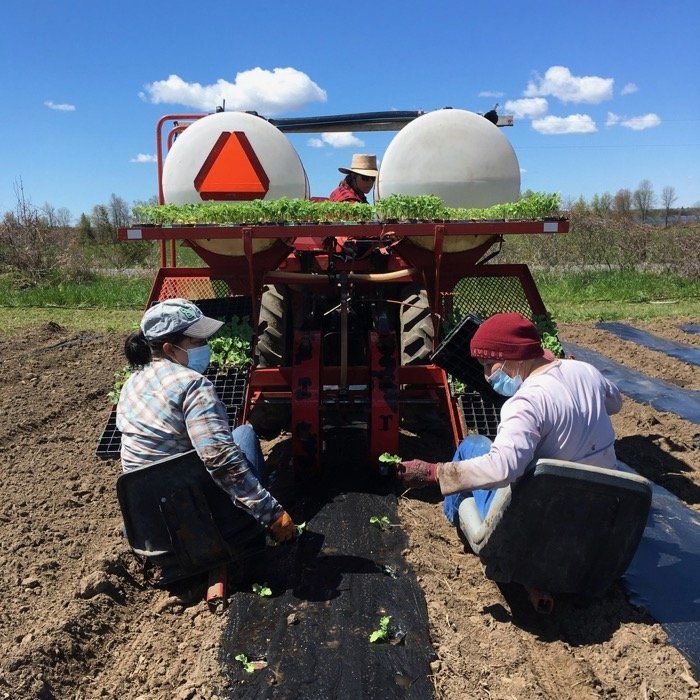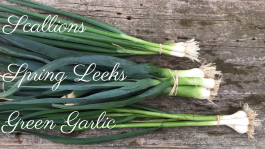Mini biology lesson and cooking with spring alliums ~
"Allium" is the latin genus for a group of plants that are included in nearly every meal as a flavour staple. Think onions, leeks, chives and garlic but also those gorgeous round spiked flower balls found in decorative gardens. Here's a little biology fun to help you understand why their flavour is so handy year round in our kitchens! If you've done any flower garden planting, you'll recognize the term biennial meaning a plant will take two years to flower. Since their life cycle requires the plant to last through the winter, they're generally hardy and some species can last through the winter in the ground even here. They also put aside lots of energy in a handy format that can store well (that's the onion bulbs or garlic heads).
We leave any leeks that are too small in the ground in the fall. Come spring, they shed any damaged leaves and begin to regrow. We watch closely, as soon as some start to send up flower stalks we harvest all our spring leeks. That way they've grown as big as they will (to the size we harvest usually in fall). After flowering, the stems become woody and tough as the plant is putting it's energy towards the flower and seed development, so we don't sell them when they flower.
Onions last through the winter in storage as it gets too cold here for them, but our fridges are close enough to the weather down south where they can survive to flower the next year. The stronger the onion flavour, the better a storage onion it will be! Since they're so delicious, gardeners over the centuries have selected seeds for quick growing varieties that don't even put on a bulb and are known as scallions. While often called green onions in the grocery stores, we save that term for when we have nice big onion bulbs with green tops mid summer. We grow scallions spring while we're waiting for onions to grow.
Garlic many of you know gets planted from cloves in the fall, and goes through the winter to grow again in spring. Green garlic is the tender early season shoots, before it flowers. We planted some cloves in our greenhouse this spring to get some early green garlic for our spring shares, and it grew really beautifully. Once the garlic is ready to flower, it sends out what we call a garlic scape which is a flower stalk that makes a curly cue. Just before the flowers open we harvest the stalk to enjoy in our cooking, usually in June. By harvesting the flower, the plant will develop the tasty cloves that we like so much rather than wasting energy developing seeds. By July we get to harvest the first fresh garlic, which has cloves on the bottom but is still green on top so the leaves can be enjoyed too. Garlic is harvested in July/August and then cured by drying for around a month to produce the classic "garlic" that we all know and love.
Cooking with fresh alliums is easy in springtime! While onions and garlic are usually cooked from the beginning of a meal, wait to toss green goodies in towards the end of the cooking as they have more delicate flavours. They can even be used as a fresh garnish. Spring leek leaves are beautiful in stocks or blended soups, the leaves can be a bit tough so are best finely chopped but delicious. The stalks of spring leeks and green garlic prefer a little cooking, as you would a mature leek. Green garlic leaves are a bit more tender and flexible but I still like to ensure they're cut up before serving. Scallions are the most tender of the three and typically the best choice for a garnish or salads. We enjoy lots of pastas, curries, stir fries and taco fillings with these spring alliums and I hope you will too!




